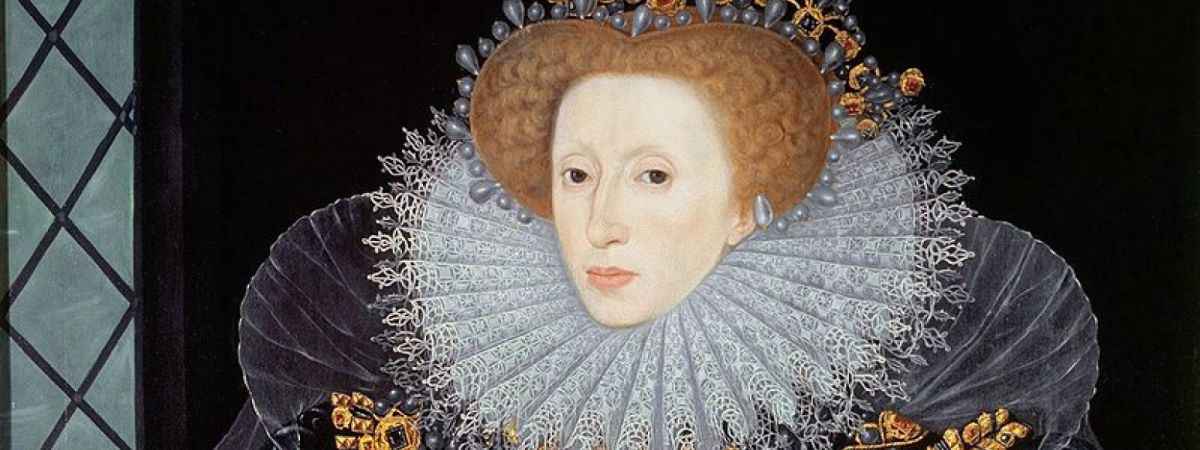Tudor Myths: Elizabeth I

Share
Elizabeth I is undoubtedly one of the most famous monarchs in British history. Yet hundreds of years later this illustrious monarch is still surrounded by secrecy and intrigue. Read on to discover some believable and downright ridiculous myths about Elizabeth I
Myth 1: Elizabeth I was beloved by everyone as Good Queen Bess
Although it is true that Elizabeth I was quite popular with a lot of her subjects she certainly had her fair share of threats to her throne. Although Elizabeth I ruled for an impressive 44 years, there were a number of attempts to get rid of her spanning most of her reign, including: the Northern Rebellion (1569); the Ridolfi Plot and assassination attempts (1571); the Throckmorton Plot (1583); the Somerville Plot (1583); the Babington Plot (1586); Dr. Rodrigo Lopez poisoning attempt (1594) and the Essex Rebellion (1601)!
Myth 2: Elizabeth I had many lovers
Elizabeth I was controversial not only because she was a female but because she refused to marry and have children. Later in her life she very much promoted the view of herself as the Virgin Queen. However she had many male favourites and male suitors which sparked widespread rumours about her having various lovers, and even giving birth to secret children. While we will never know if she was having non-platonic relationships with any of the men around her, the Tudor court was not a place where secrets were easily kept. However, we can safely say that Elizabeth I did not have any secret children it would have been impossible with how closely she was watched by her own court and spies from other courts.
Myth 3: Elizabeth I was actually a man
The most outlandish rumour about Elizabeth I has to be that she was actually a man! Although seemingly ridiculous this rumour has prevailed and some high profile people across history have believed it. The rumour is that Elizabeth actually died as a young child during the period she was sent away from court because of fears about the plague. Her maid, not wanting to be executed, found a boy who looked like a girl and pretended that he was Elizabeth. Believers have used the fact she refused to marry or have children, and also the way she ruled in such a dignified and strong way, as evidence of this theory. This rumour is mostly likely reflective of historical attitudes towards strong women and could have been used as an attempt to discredit her and future female rulers. While in theory it is possible that Elizabeth I could have been switched as a child, with so many enemies throughout her reign, there is no way Elizabeth would have been able to keep being a man a secret!
Myth 4: Elizabeth resented her mother Anne Boleyn
Many people believe that Elizabeth grew to resent her mother Anne Boleyn, especially after the intense propaganda that followed her execution. However there is compelling evidence to suggest this was not the case. Famously for much of her life Elizabeth wore a ring which had a little door, behind which was a tiny portrait of her mother. She had the picture painted by an artist who had known Anne Boleyn personally and she managed to keep the commission a secret from her father. Theres also a famous family portrait in which the young Elizabeth is seen wearing a necklace with the letter A on it proof that she was honouring her mothers memory, despite attempts to discredit it.
Myth 5: Elizabeth I wrote some of Shakespeares plays:
This myth has been quite enduring, however there is absolutely no evidence of this. Most who believe Shakespeare's plays are Elizabeth I's work do so because they dont believe Shakespeare could have written such iconic texts with his background. Elizabeth I was well-educated, well-read and, according to her tutors as well as many diplomats and dignitaries, she was an excellent writer. However, there is no evidence that she actually wrote plays or fictions of her own, let alone allowed Shakespeare to take credit for her work. Whats more, several of Shakespeares plays were released after Elizabeth I had died.